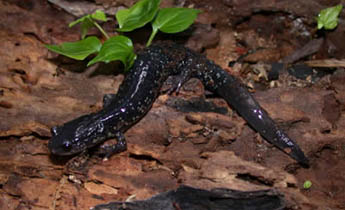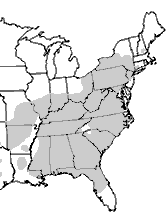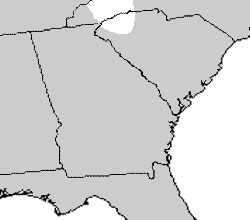Slimy Salamander (Plethodon glutinosus complex)



Photos by J.D. Willson unless otherwise noted
| Description: Slimy Salamanders were once considered one species (P. glutinosus) but have recently been split into 13 separate species. They all look similar and are best differentiated by range. Slimy salamanders are large salamanders, reaching 6.75 in (17 cm), with blackish-blue color and scattered silvery-white or gold spots all over their body. Its tail is round and its venter is grayish black or slightly lighter than the dorsum. The Slimy salamander gets its name from the slimy secretions it produces when threatened, which stick like glue and are hard to get off. They have approximately 16 costal grooves.
Range and Habitat: Slimy Salamanders are found throughout eastern North America, except for southern Florida, including all of South Carolina and Georgia. This salamander lives in moist, undisturbed woodlands and moist wooded ravines. Habits: Slimy Salamanders prefer to stay under logs, stones, debris, or in burrows during the day and come out on moist nights forage for invertebrate prey. During the breeding season male adult Slimy Salamanders, unlike females, have a large mental gland on the chin, which they use to stimulate the female. They breed annually, depositing about 6-36 eggs under logs or dirt in the summer or early fall. These eggs will usually hatch around October and young do not have an aquatic larval stage. They mature in about 3 years. Conservation Status: Slimy Salamanders are common throughout their range and are not protected in our region or Federally. Pertinent References: Jaeger, Robert G., Joseph, Raymond G., Barnard, Debra E. 1981. Foraging tactics of a terrestrial salamander: sustained yields in territories. Animal Behavior 29(4): 1100-1105 Account Author: Anna Tarter, University of Georgia – revised by J.D. Willson |
